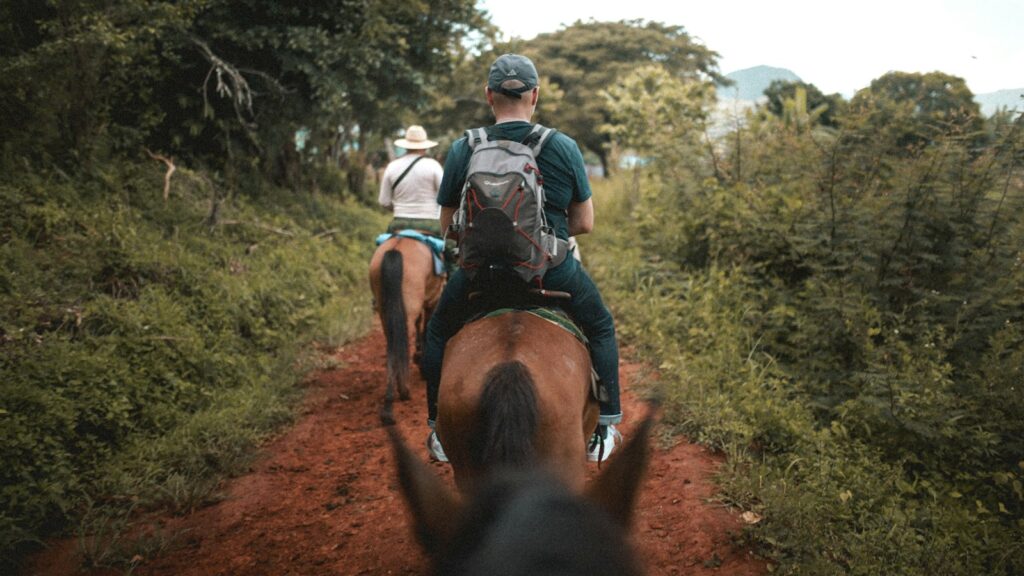Horses are naturally reactive animals with a strong flight instinct that has helped them survive as prey animals for millennia. This instinct, while essential in the wild, can create challenges when riding on trails where unexpected obstacles, sounds, and situations may trigger fear responses. Desensitizing your horse to common trail dangers is not just about convenience—it’s about safety for both you and your equine partner. A well-desensitized horse remains calmer in stressful situations, making your trail adventures more enjoyable and significantly reducing the risk of accidents. This systematic process requires patience, consistency, and an understanding of equine psychology, but the rewards of having a confident trail companion are immeasurable. Let’s explore proven methods to help your horse face common trail challenges with confidence rather than fear.
Understanding Equine Fear Responses
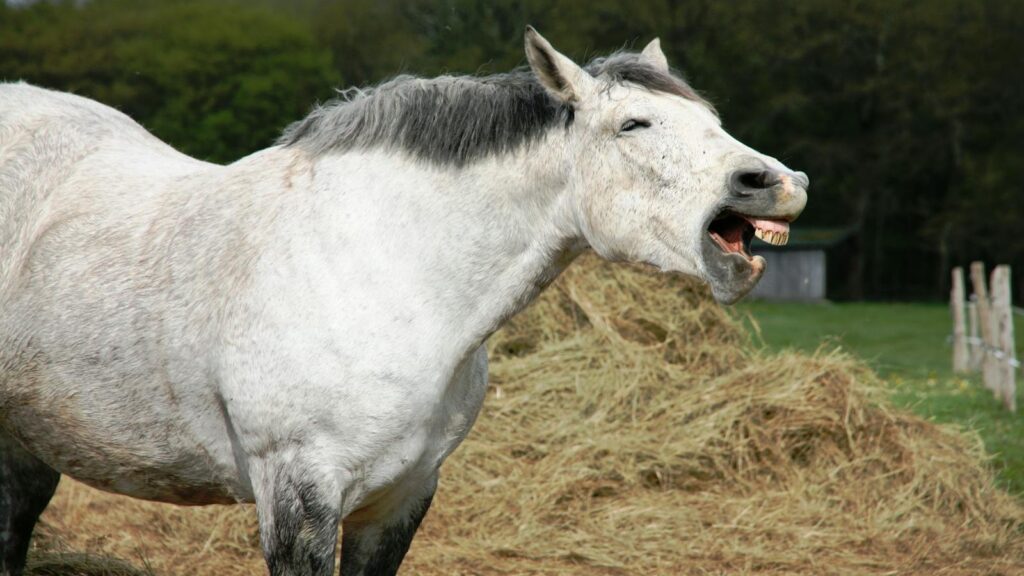
Before embarking on any desensitization program, it’s essential to understand how horses perceive and respond to fear. Horses are programmed with an instinctive fight-or-flight response that typically favors flight—a survival mechanism that has protected the species for centuries. When frightened, a horse’s heart rate increases, adrenaline surges, and their focus narrows to the perceived threat, often making them temporarily “deaf” to rider commands. This physiological response can manifest as spooking, bolting, freezing, or even rearing, all of which pose significant safety concerns on the trail. Understanding that these reactions aren’t deliberate disobedience but natural survival responses helps riders approach desensitization with greater patience and appropriate expectations. Remember that each horse has individual sensitivity levels and past experiences that will influence how quickly they can overcome specific fears.
Creating a Foundation of Trust
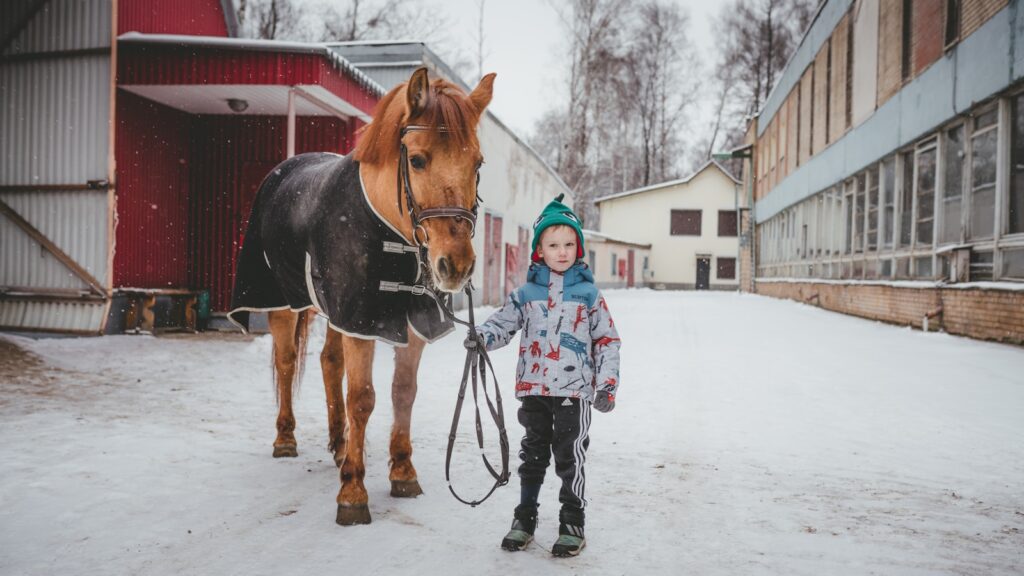
Successful desensitization begins with establishing a solid foundation of trust between you and your horse. A horse that trusts its handler is far more likely to overcome fears and accept new experiences. Spend quality groundwork time with your horse daily, focusing on clear communication and consistent responses to their behavior. Practice basic leading exercises where your horse willingly follows you, stops when you stop, and moves away from pressure appropriately. Incorporate simple obstacles in familiar environments, rewarding calm responses with praise, rest, or treats depending on what motivates your particular horse. This trust-building phase is not a step to rush through or skip—it’s the essential groundwork that makes all subsequent desensitization efforts more effective and lasting. Remember that trust is earned through consistency, fairness, and demonstrating to your horse that you are a reliable leader who keeps them safe.
The Principles of Effective Desensitization
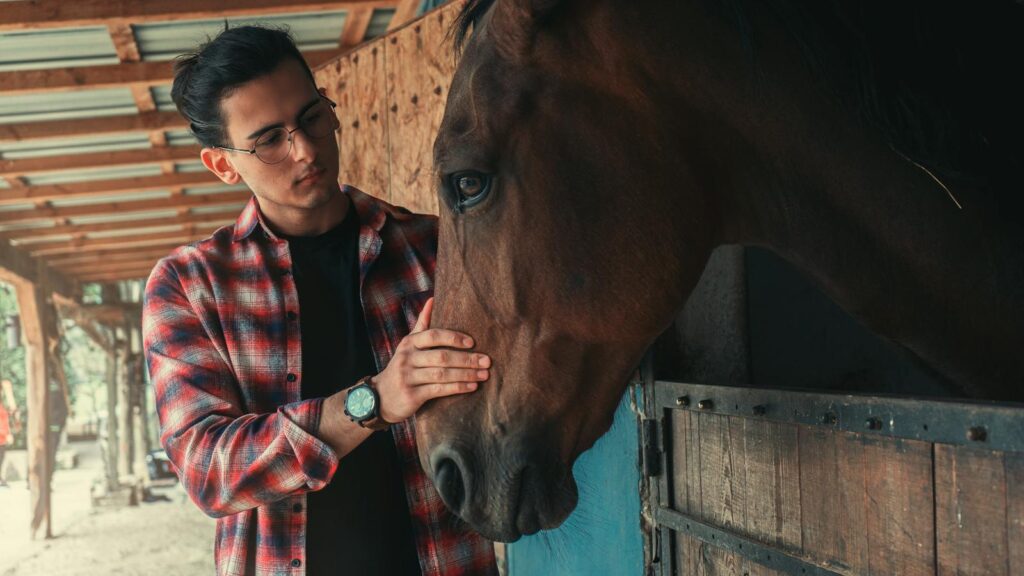
Effective desensitization follows several key principles that maximize success while minimizing stress for your horse. The first principle is gradual exposure—introducing stimuli at a distance or intensity that doesn’t trigger a fear response, then slowly increasing exposure as the horse shows acceptance. The second principle is consistency—regular, structured sessions build faster progress than sporadic, intensive training marathons. Timing represents the third critical principle—releasing pressure and offering rewards the moment your horse shows the desired calm response reinforces that behavior. Fourth is reading your horse accurately—recognizing subtle signs of fear versus curiosity allows you to adjust your approach before a full-blown panic response occurs. Finally, end each session on a positive note with something your horse finds easy and comfortable, building confidence rather than anxiety about the next training session. These principles should guide every desensitization exercise regardless of the specific obstacle or stimulus you’re addressing.
Starting with Groundwork Desensitization
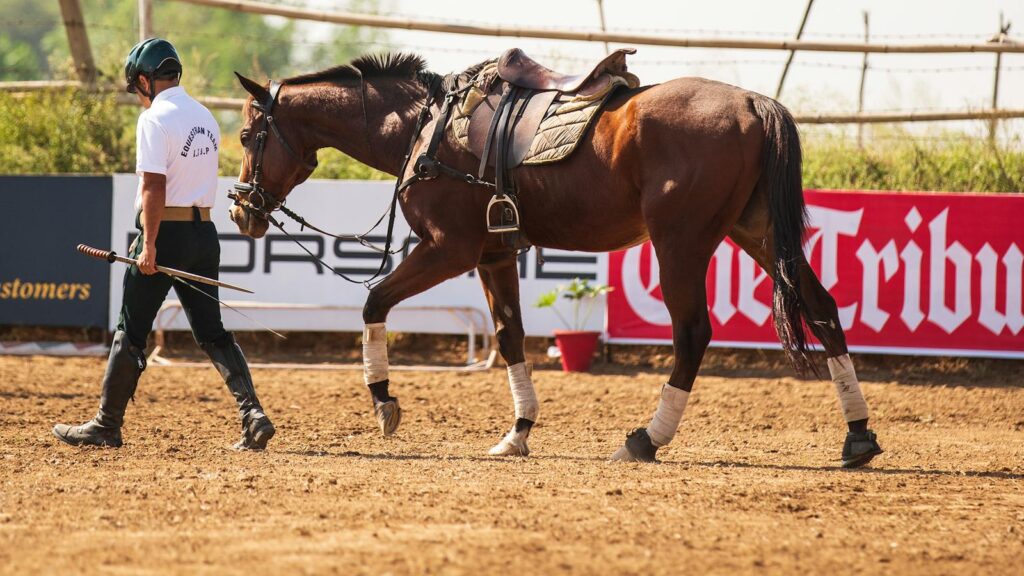
Groundwork provides the safest and most effective starting point for desensitization training before moving to mounted work. Begin in a secure enclosed area where your horse feels comfortable, such as a round pen or small arena. Introduce potentially frightening objects one at a time—items like tarps, flags, umbrellas, or bags can simulate trail obstacles while giving you control over their presentation. Use a technique called “approach and retreat,” where you bring the object closer until you notice the first signs of concern (ear flicking, raised head, increased tension), then immediately remove it before returning at a more acceptable distance. Gradually decrease the distance as your horse’s comfort increases, eventually touching them with the object and moving it around their body. This groundwork phase establishes a pattern where your horse learns to stand still and think through their fear rather than fleeing, creating a crucial foundation for mounted work. Many trainers recommend spending several weeks on groundwork desensitization before attempting similar exercises while riding.
Desensitizing to Water Crossings
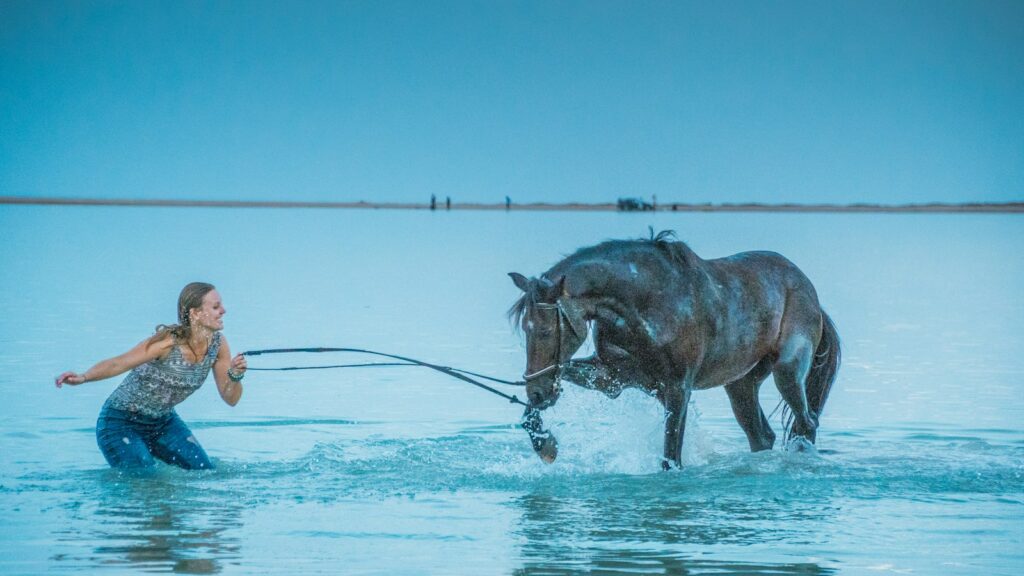
Water crossings represent one of the most common challenges on trails, with many horses showing reluctance or outright refusal to enter even shallow streams. Begin desensitization by accustoming your horse to walking through puddles in the arena or small water obstacles you create at home. For horses with significant water fear, start by leading them alongside water before gradually asking them to place just one foot in, rewarding immediately for this small step. Never force a frightened horse into water—this creates negative associations that can worsen their fear. Instead, consider using a confident companion horse to demonstrate safe crossing, as horses naturally learn through observation of herd members. Some trainers successfully use clicker training for water crossings, marking and rewarding each progressive step toward and into the water. Remember that murky water presents an additional challenge since horses can’t see the bottom, so clear water crossings make better training opportunities for beginners before tackling more challenging streams.
Managing Bridge and Narrow Trail Crossings

Bridges and narrow trail sections can trigger anxiety in many horses due to the confined space, unfamiliar footing, and sometimes height. Start bridge desensitization with a ground-level plywood board to simulate different footing, gradually increasing to raised platforms as confidence builds. Using ground poles on either side of a narrow pathway helps define boundaries while practicing at home before encountering similar challenges on actual trails. When approaching real bridges on trails, dismount and lead your horse the first few times, allowing them to investigate the structure and footing at their own pace. Pay particular attention to the sound their hooves make on different bridge materials, as the hollow sound of wooden bridges often startles horses unfamiliar with this feedback. For extremely narrow trail sections, practice precision steering exercises at home, teaching your horse to place their feet exactly where directed through pole patterns and corridors of decreasing width. These exercises build both physical skills and mental confidence for navigating challenging trail sections.
Building Confidence Around Wildlife Encounters
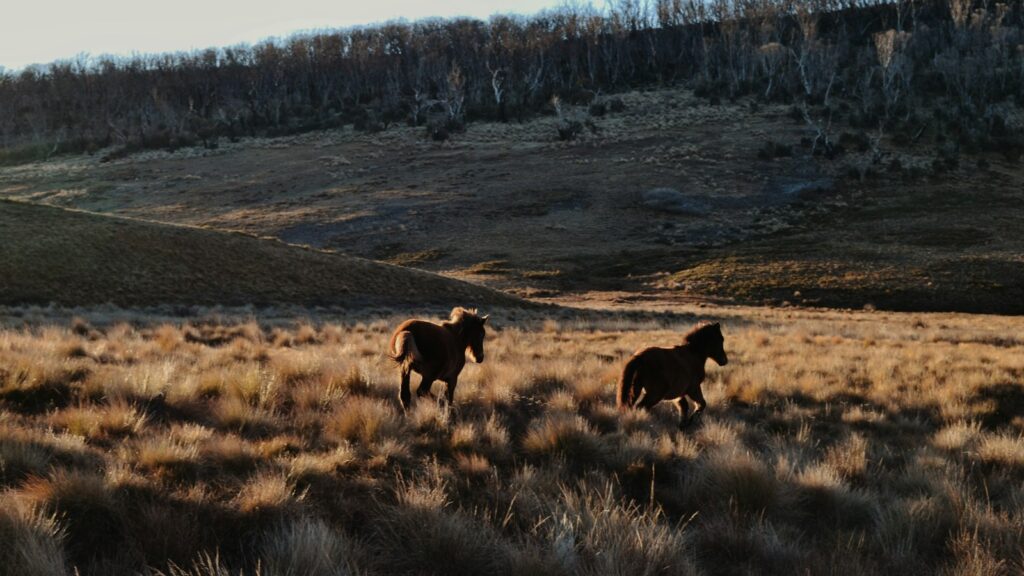
Unexpected wildlife encounters can trigger strong flight responses even in otherwise steady trail horses. While you can’t predict exactly what animals you’ll encounter, you can simulate similar surprises in controlled environments. Use stuffed animals, wildlife decoys, or even recordings of animal sounds during training sessions to accustom your horse to sudden appearances or noises. Practice riding past dogs in controlled settings, as domestic dogs often appear on trails and can closely mimic predator movements that trigger fear in horses. For areas with specific wildlife concerns, like bears or moose, consider seeking videos that include both the visual and audio components of these animals to incorporate in your desensitization program. Some riders successfully use hunting supply stores’ wildlife decoys for realistic visual impressions. Remember that wildlife encounters combine multiple fear triggers—surprising movement, unusual smells, and unfamiliar sounds—so your desensitization should gradually incorporate all these elements.
Handling Trail Vehicle Encounters

Modern trail systems often involve encounters with various vehicles that can frighten horses unfamiliar with them. Begin vehicle desensitization in a safe enclosed area with vehicles moving at a distance, gradually decreasing that distance as your horse’s comfort increases. Motorcycles and ATVs present particular challenges due to their noise and erratic movements, so enlist friends with these vehicles to help with controlled practice sessions. Bicycles represent another common trail encounter requiring specific training, as their silent approach and sudden appearance often startle horses. Set up practice scenarios where cyclists approach from different directions at increasing speeds, rewarding your horse for maintaining calm. For horses who will regularly encounter vehicles on trails, consider parking your trailer near busy roads or ATV paths for short training sessions, allowing them to observe passing vehicles from the safety of a familiar space. This gradual habituation helps normalize these encounters before experiencing them in less controlled trail environments.
Managing Surprise Elements and Sudden Movements
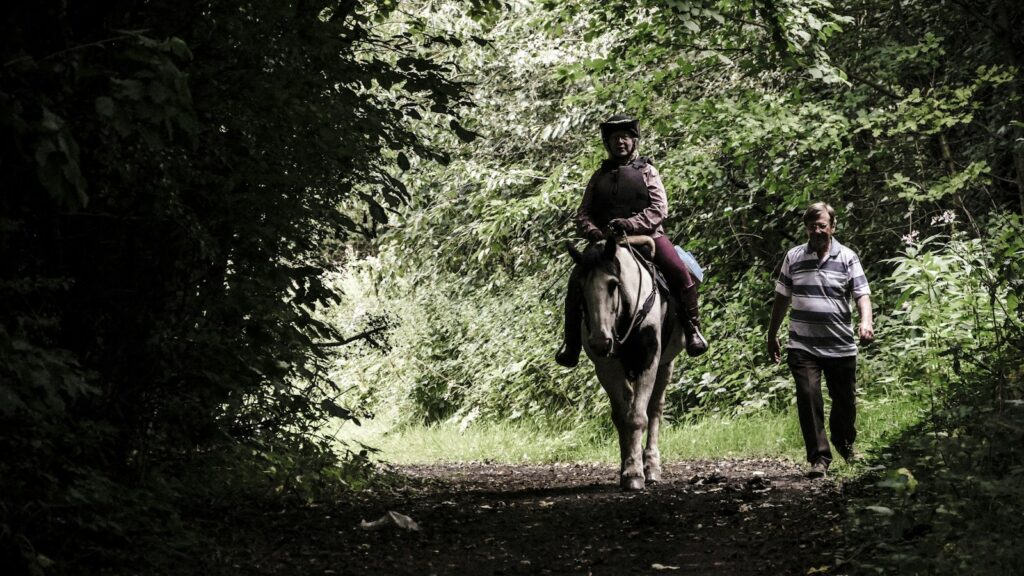
Trails frequently present surprising elements that seem to appear without warning—a flapping tarp, a bird suddenly flying up from bushes, or a branch snapping underfoot. Recreate these experiences in controlled settings by introducing various surprise elements during groundwork and riding sessions. Have an assistant unexpectedly open an umbrella at progressively closer distances, shake a plastic bag, or toss a small ball nearby. Initially maintain enough distance that your horse notices but doesn’t panic, gradually decreasing this safety margin as confidence builds. Purposely ride past flapping laundry on clotheslines, flags, or balloons secured to fences to simulate movement accompanied by visual stimuli. Teaching your horse the “spook in place” concept represents a valuable safety skill—they may startle but learn to jump or flinch without bolting or running away. This trained response allows them to process the surprise while remaining under control, significantly increasing rider safety during genuine trail surprises.
Navigating Trail Obstacles and Technical Elements
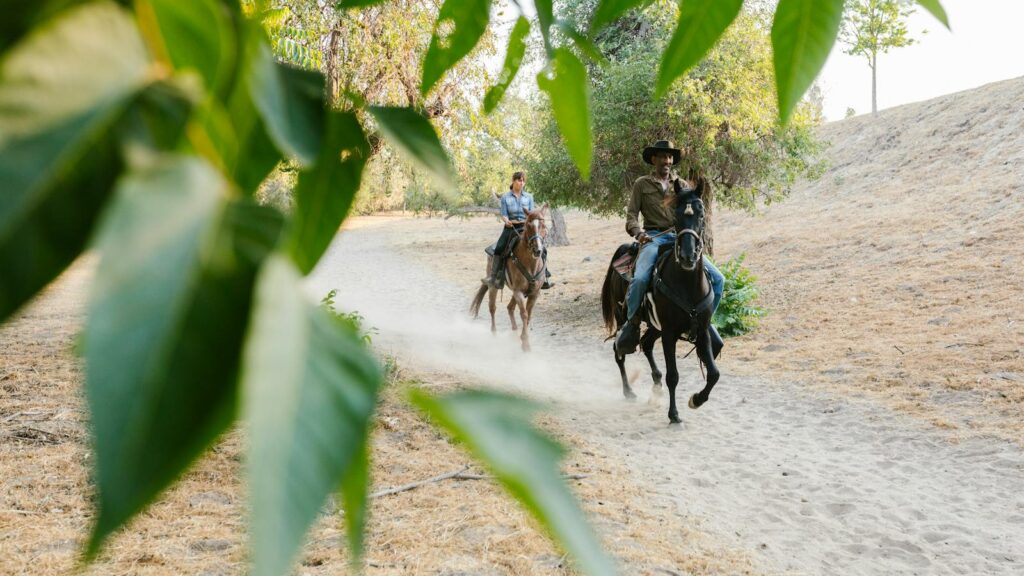
Modern trail systems often include purpose-built obstacles like step-ups, rock gardens, logs, or terrain parks that can challenge inexperienced horses. Create a simple obstacle course at home using materials that simulate trail challenges—raised poles for step-overs, small logs, uneven footing areas with varied textures, and narrow passages between trees or posts. Practice these obstacles first during groundwork sessions, then progress to riding through them at walking pace before adding speed or complexity. Many riders benefit from participating in organized trail obstacle competitions or clinics as intermediate steps between arena practice and actual trails, as these events typically feature well-designed obstacles in controlled environments. Focus particularly on teaching your horse to pick up their feet deliberately over obstacles rather than rushing or scrambling, a skill that significantly reduces tripping risks on technical trails. For horses struggling with specific obstacles, break the challenge into smaller components, rewarding success at each progressive step rather than expecting immediate mastery.
Group Riding Dynamics and Separation Anxiety
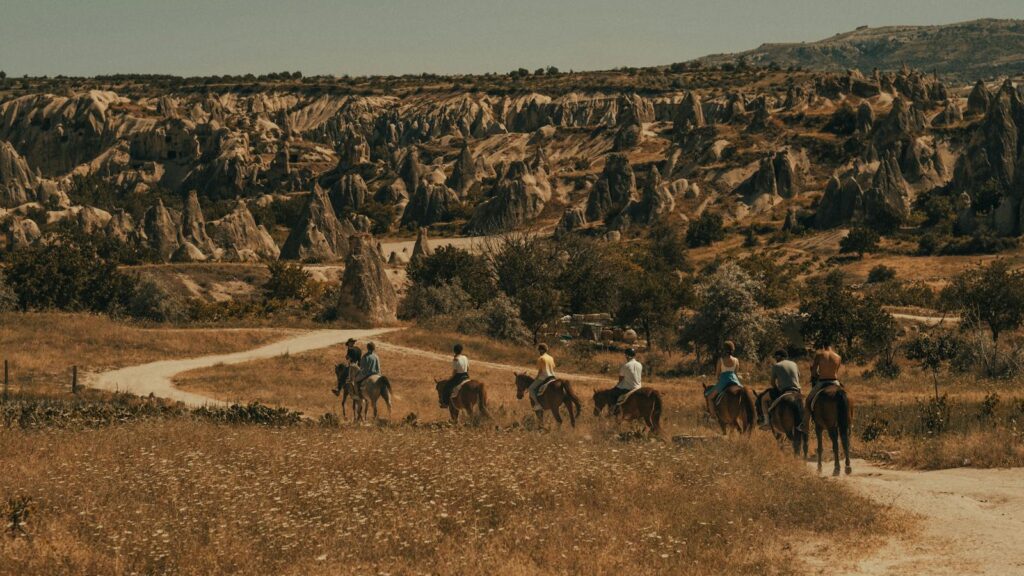
Many horses become anxious when separated from other horses on trails, making group riding dynamics an important aspect of desensitization training. Begin addressing separation anxiety in familiar environments by having a companion horse walk short distances away, gradually increasing separation time and distance as your horse remains calm. Practice riding at different positions within a group rather than allowing your horse to always follow or always lead, which builds adaptability for various trail situations. Teach your horse to stand quietly while other horses move ahead on the trail, a crucial safety skill for managing group rides. Some horses develop excessive competitive behaviors on trails, rushing to keep up or pass other horses, which requires specific training to maintain a consistent pace regardless of other horses’ positions. These group dynamics should be practiced in increasingly challenging environments, progressing from arena work to quiet trails before attempting more stimulating group trail rides in new locations.
Strategies for Weathering Weather Changes
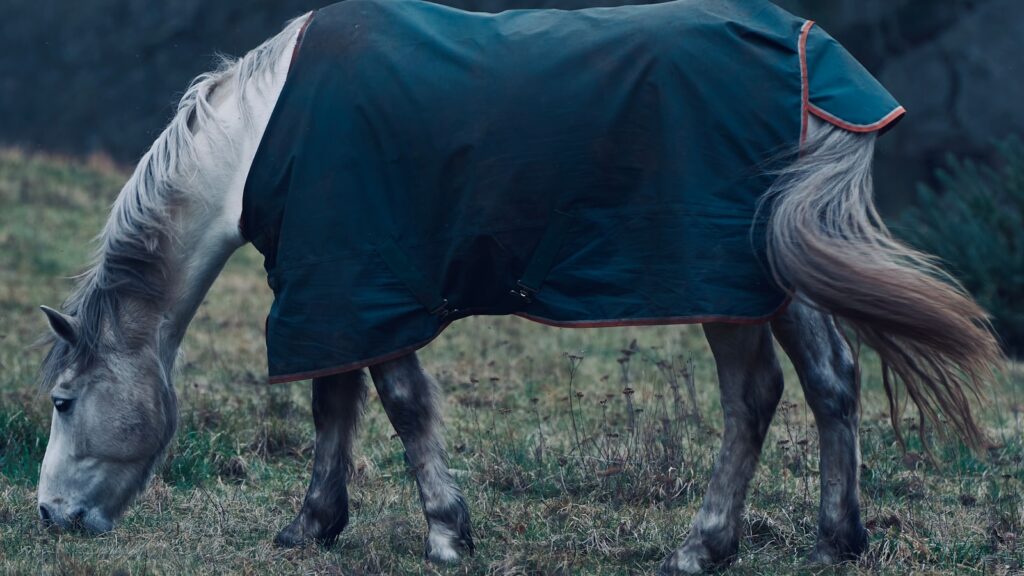
Weather changes on trail rides—sudden wind gusts, rain showers, or approaching storms—can transform a calm horse into a nervous one within seconds. Deliberately expose your horse to different weather conditions in controlled environments before encountering them on distant trails. Practice riding during windy days in your arena, focusing on maintaining relaxation as objects move and make noise around you. Use a garden hose to simulate rain, starting with gentle sprinkles while your horse is relaxed and gradually increasing to heavier spray as their confidence builds. For thunder desensitization, find quality recordings of thunderstorms that you can play at increasing volume during groundwork and riding sessions. Many riders successfully use clicker training techniques for weather desensitization, marking and rewarding moments of relaxation during challenging weather stimuli. Remember that weather changes often affect multiple senses simultaneously—wind creates visual movement, unusual sounds, and carries unfamiliar scents—making this desensitization particularly important for trail safety.
Maintaining and Testing Desensitization Progress
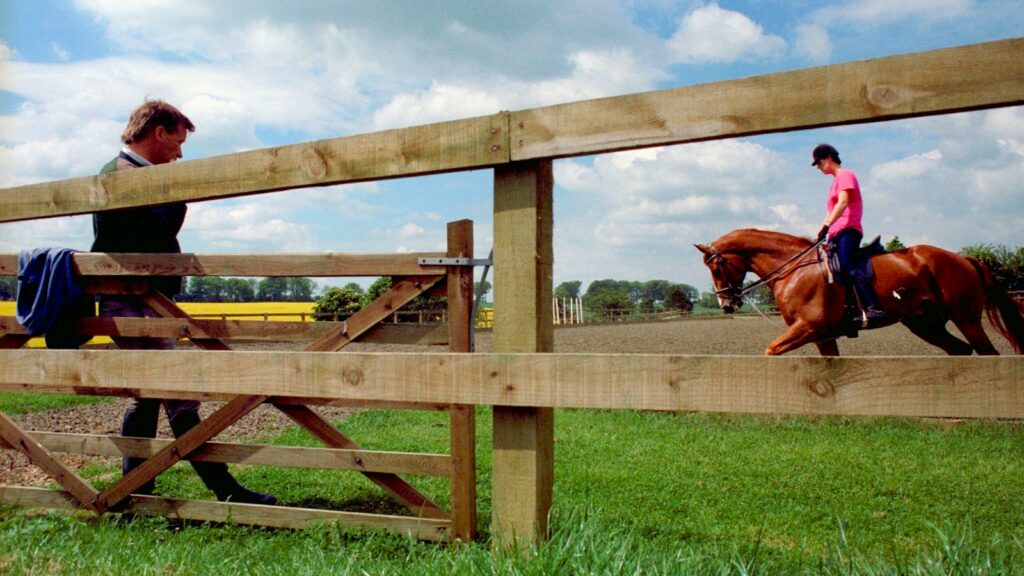
Desensitization isn’t a one-time training event but rather an ongoing process requiring maintenance and occasional refreshers. Schedule regular sessions that incorporate previously mastered stimuli to reinforce calm responses, particularly before planning challenging trail outings. Test your horse’s desensitization progress by gradually introducing the same stimuli in new environments, as horses often struggle to generalize their learning across different locations. When your horse demonstrates confidence with individual elements, begin combining multiple challenges—perhaps crossing water while a bicycle passes or navigating a bridge during windy conditions. Keep a training journal documenting specific desensitization exercises and your horse’s responses, which helps track progress and identify areas needing additional focus. Remember that even well-desensitized horses may occasionally revert to fearful responses during particularly stressful situations or after long breaks from exposure, requiring patience and a return to basic desensitization principles rather than punishment or frustration.
When to Seek Professional Help
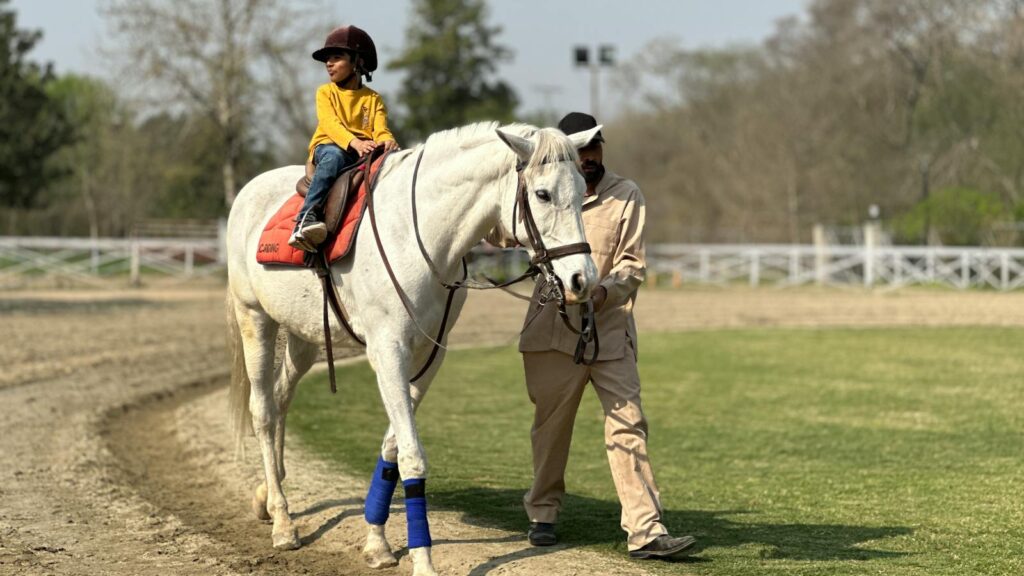
While many riders successfully desensitize their horses independently, certain situations warrant professional intervention. Consider seeking professional help if your horse shows extreme fear responses that endanger you or themselves, such as rearing, bolting uncontrollably, or aggressive behavior when frightened. Horses with traumatic histories or those who have learned dangerous evasive behaviors may require specialized rehabilitation beyond typical desensitization protocols. Another indicator for professional assistance is reaching a plateau where progress stalls despite consistent effort, suggesting the need for fresh approaches or advanced techniques. When selecting a professional trainer for desensitization help, look for someone with specific experience in fear-based behavioral issues rather than general riding instruction, preferably using methods that prioritize the horse’s mental wellbeing rather than just compliance. Many qualified professionals offer short-term clinics or assessment sessions that can provide valuable guidance you can continue implementing yourself, making professional help accessible even with budget constraints.
Putting It All Together: Progressive Trail Challenges
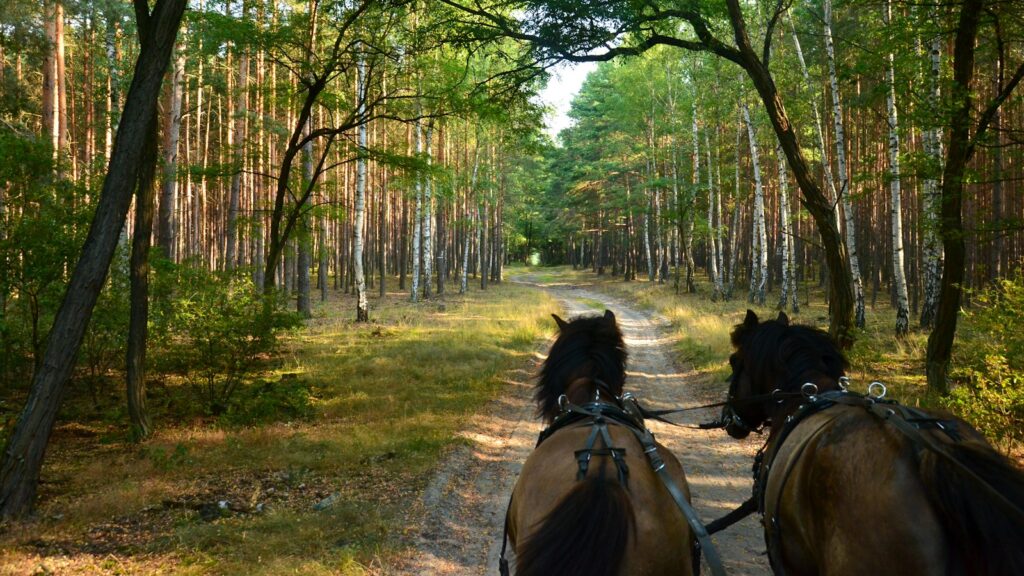
Once your horse shows confidence with individual desensitization elements, create a progressive plan for real-world trail experiences that gradually increase in difficulty. Begin with short rides on quiet, familiar trails with minimal challenges, preferably accompanied by an experienced equine partner who can provide confidence. Gradually introduce single new elements—one ride focusing on a small water crossing, another incorporating a brief section with bicycle traffic. Maintain a consistent riding schedule that includes regular exposure to previously mastered challenges to prevent regression. Create a “challenge map” of local trails that rates them by difficulty and specific desensitization elements, allowing you to select appropriate outings based on your horse’s current abilities and confidence level. Plan each trail outing with specific training goals rather than distance objectives, considering it successful if your horse navigates target obstacles calmly, even if you cover less ground than anticipated. This methodical approach builds a trail horse who reliably handles diverse challenges with confidence, making every ride safer and more enjoyable for both horse and rider.
Building Trail Confidence Through Desensitization
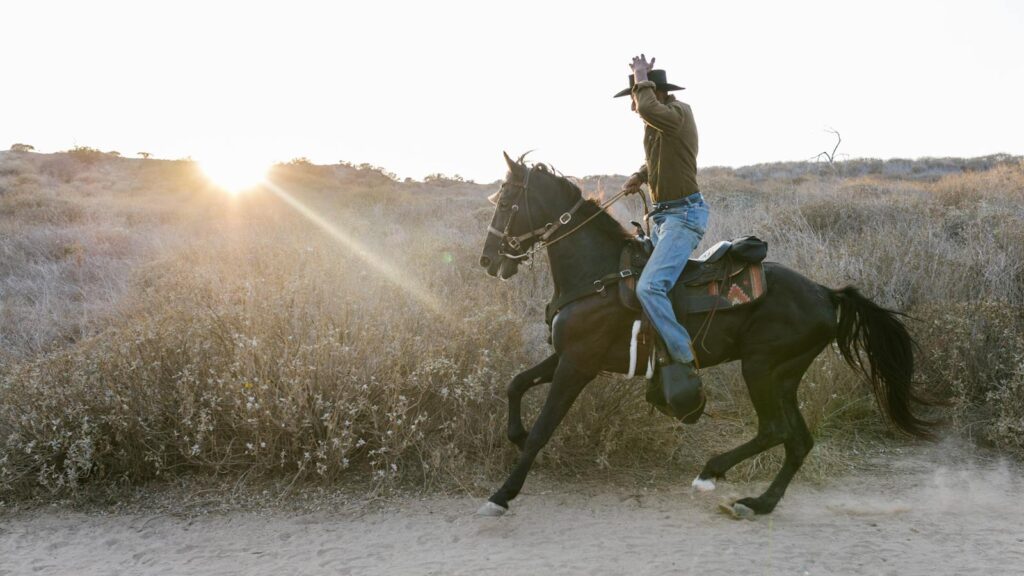
As you embark on desensitizing your horse to trail challenges, remember that the journey itself is valuable regardless of how quickly you progress. The communication, trust, and partnership developed through this process often prove more rewarding than simply having a “bombproof” trail horse. Each small success builds your horse’s confidence not just for trail riding, but for all aspects of your relationship. Patient, consistent desensitization transforms fearful reactions into thoughtful responses, replacing the instinctive flight reaction with a willingness to trust your guidance through unfamiliar situations. While the process requires significant time investment, the result—a confident equine partner who faces new challenges with curiosity rather than fear—makes every moment worthwhile. Your desensitized horse becomes not just safer, but also more enjoyable to ride as you both discover the freedom and joy of exploring trails together.

